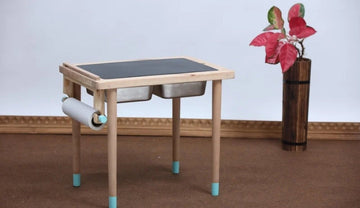By Aishwarya Dwarakanath, Montessori Guide
Picture this- you’re at the supermarket and your toddler is throwing a screaming fit. Kicking, flailing around and about to throw things off the shelf.
Your immediate reaction can be to freeze, to fight the problem or to just get out of there and threaten with a non-related consequence.

Basically, go- ‘nonono’, ‘STOP IT! NO Throwing!’, ‘No Play area today!!’
(or sometimes, all three!)
No judgment, mommas, we do what works in the situation. But, as parents and educators, we’re all looking for ways to handle our children’s behaviour problems better. We feel empowered to respond instead of just react to the situation.
There is enough research and more on how shouting, hitting and providing unnatural consequences- like not taking the child to the park on Wednesday because they threw their food on Saturday- does more damage than good. Their brains simply cannot remember and link things easily, even though you may say otherwise when they pick the juiciest expletive to yell out when guests are home.
Studies show that when children think it is okay to shout and hit others who are not physically stronger than them leads to cyclical behaviour over generations!
The silver lining to this dark cloud is that clearly, children learn from looking at what we do. And as adults, we actually can control our urges and impulses better than our little ones.
Let me explain. Thanks to an underdeveloped pre-frontal cortex toddlers and children simply cannot control their impulsive urges that stem from a ‘will’ that pushes them to be curious, motivated and completely absorbed by a single thought. So how do we help them control and nurture this ‘will’ instead of stopping it and hindering its progress? Dr Montessori calls this urge the ‘horme’ and asks us to work with it and help develop self-discipline as opposed to discipline for external reasons.
If not for punishments, are rewards the solutions? Very young children do enjoy gifts, positive experiences and acts of love- but do not connect them to an action that they did. They are too young to understand the causality of how a good behaviour begets good things. Also, is a reward going to be the sole motivator for developing discipline?

While positive words encourage positive behaviour, some words and phrases shift the focus onto us, the grown-ups, rather than educate the child- which is what discipline is.
Discipline means teaching our children what is right and what is unacceptable behaviour, and helping them to control the urges that lead to the ‘wrong’ behaviour.
Here’s what we can do to help toddlers make better decisions even in tense situations. Fair warning, it’s tougher to implement than just spanking or scolding.
1. No means no:
When you set the rule, follow through. Limits need to be consistent and logical. Hitting someone with a ball = no more playing with the ball for the evening.

When toddlers use deadly combinations of whining + crying + sceaming + kicking etc. etc., pull up your sleeves and stick to your parenting decision. This is the long haul we’re talking about. If you give in, we get it and we aren’t here to judge. Just pause, reflect and move ahead.
The trick? Use your no’s sparingly and well. Saying ‘no’ to everything that the toddlers’ urge asks them to explore and do is just going to create frustration for you and the toddler. When your little one picks up a really big jug, before you say no, think- is this dangerous for him and others? Not really. Can we clean the mess? Yes, lets’ wipe. Is my baby learning something new? Definitely.
2. Offer choices:
Dr Maria Montessori, the founder of the Montessori method, through her observation of children in settings that provided freedom and limits, saw that the children were capable of making choices. She believed that allowing them to make choices helps them develop their will in a positive manner, within the limitations set by the environment.

If it’s a sunny day, don’t offer the entire closet as options to wear for your little one. Have a dressing drawer/ wardrobe rack (Ariro’s play gym doubles up really well as a dressing rack) at their height using which you can just pick two clothes that are appropriate for the weather and the occasion and hang them as options.
3. Prepare the environment:
The setting for a child should allow for independent exploration of everyday activities, objects and toys. If your child is oblivious as to where his toys go after play time, or if she can’t reach her water bottle and has to try and climb onto the kitchen shelf before you can come, you are blocking the pathway to your child’s independence and effectively blocking out years from your own life as you run around doing things for them.

Preparing the environment sets your child up for success and reduces squabbles to a large extent in any situation. For example, when a child comes over to play, decide with your child the toys they would be comfortable sharing and keep them out in the open. All other toys go inside.
Preparing the environment includes preparing yourself- the grownups! All grownups in the home need to be aware of the common limits that the child NEEDS to know to live a healthy, happy life. The adult must also look within and see what incidents trigger an inappropriate/ disproportionate reaction. Apologising and calming down in front of your toddler is an incredible opportunity for them to see how to regulate their own emotions- thereby learning how to behave better- which is discipline, isn’t it?





